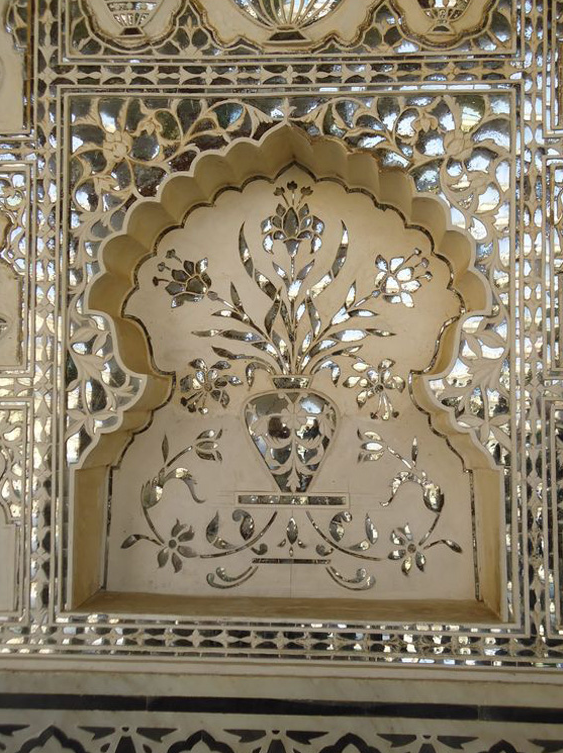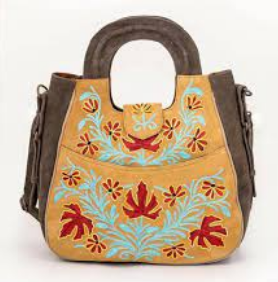Thikri mosaic inlay, is a traditional form of decorative art from Rajasthan. It is a technique of creating intricate and colorful mosaic patterns using semi=precious stones or glass pieces in plaster or cement.
The word “Thikri” is derived from the Hindi word “thekar,” which means a mosaic worker or artisan. Thikri art has been practiced for centuries and is often found in the palaces, forts, and havelis (traditional mansions) of Rajasthan.
The process of creating Thikri art involves skilled artisans who meticulously arrange small pieces of colored glass or semi-precious stone, called “Thikris,” to form intricate geometric or floral patterns. The inlaid pieces are usually cut into various shapes, from squares, rectangles, triangles, and circles and can be transparent, opaque, or have a reflective surface, creating a play of light and colour. These pieces are then set into a prepared surface, often a plaster or cement base, using a specialized adhesive. The arrangement of the pieces requires precision and attention to detail to achieve the desired pattern.
The motifs and patterns in Thikri art can extend from geometric shapes, intricate floral designs, and traditional motifs like peacocks, elephants, and lotus flowers.
Traditionally, Thikri art was used to adorn the walls, ceilings, and pillars of royal residences and important buildings. It added a touch of luxury and grandeur to the architectural spaces. Today, Thikri art has also found its way into contemporary interior design, where it is used to create stunning focal points or accent pieces in homes and commercial spaces.
Gallery
YOUR VIEWS
PRACTITIONERS: INDIA
Access 70,000+ practitioners in 2500+ crafts across India.
BIBLIOGRAPHY
10,000+ listings on arts, crafts, design, heritage, culture etc.
GLOSSARY
Rich and often unfamiliar vocabulary of crafts and textiles.
SHOP at India InCH
Needs to be written.






